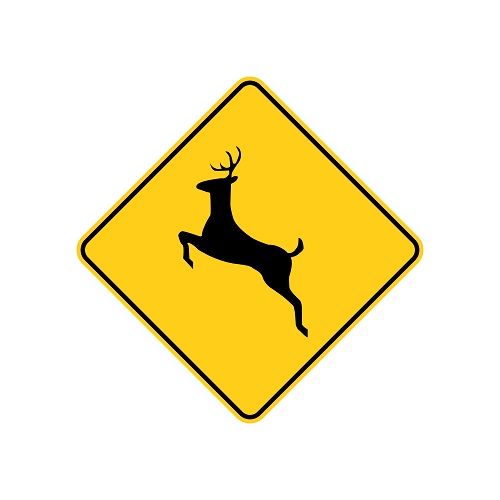As we continue through deer season, there are several ways to prepare for animal collisions before, during, and after a potential event. Before an event, know that deer move around dusk and dawn, so be particularly alert during those times. If you drive around areas with the yellow deer sign, know that deer may be present in or near the roadway. These signs are usually placed in areas that are dense with deer and there is a history of collisions.
alert during those times. If you drive around areas with the yellow deer sign, know that deer may be present in or near the roadway. These signs are usually placed in areas that are dense with deer and there is a history of collisions.
Regardless of whether you are driving through an area dense with deer, you must drive within the limits of your vision. At night, your high beams may give you some more vision range down a dark roadway, but you need to be able to stop within the distance you can recognize objects on the roadway. Ruan drivers are expected to recognize and adapt to low-visibility driving conditions.
Animal collisions are in most cases non-preventable accidents. When you encounter an animal in your lane, brake and keep control of the vehicle. Do not swerve at this may result in a rollover or a collision with another vehicle.
After a collision, be sure to inspect the vehicle for damage. Stop as soon and as safely as you can, turn on your hazards, and put out your triangles to secure the area to warn other drivers that you are stopped. Once you are safe on the roadway, do a visual inspection of the point of contact, even if you have a deer guard installed on your truck. Damage can show up in unexpected places, such as cut fluid or air lines, bent tie-rods, or even damage to tires.
Most Ruan trucks operating in areas with a high number of deer have a tube bumper that is effective for reducing damages, but of course these do not reduce the number of collisions. Additionally, deer whistles are installed on many vehicles, but the evidence on whether they work is inconclusive.
Be safe this deer season, and remember—don’t veer for deer!